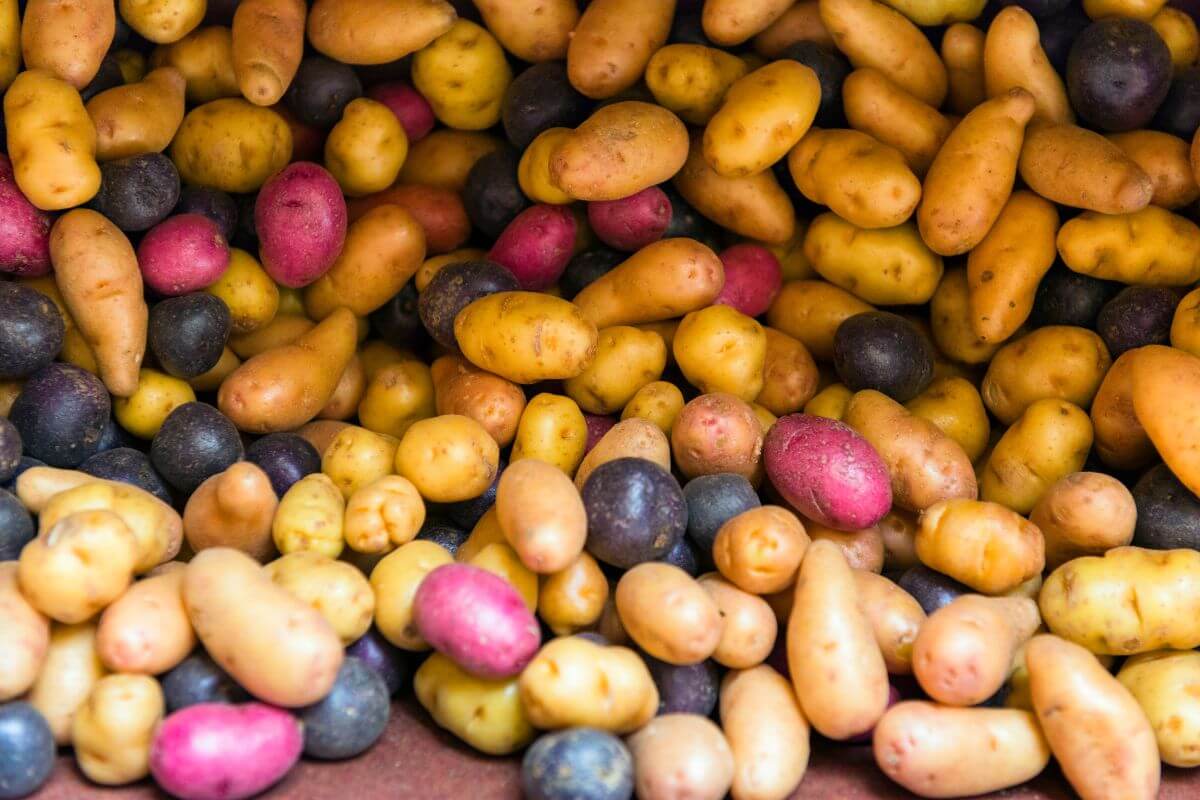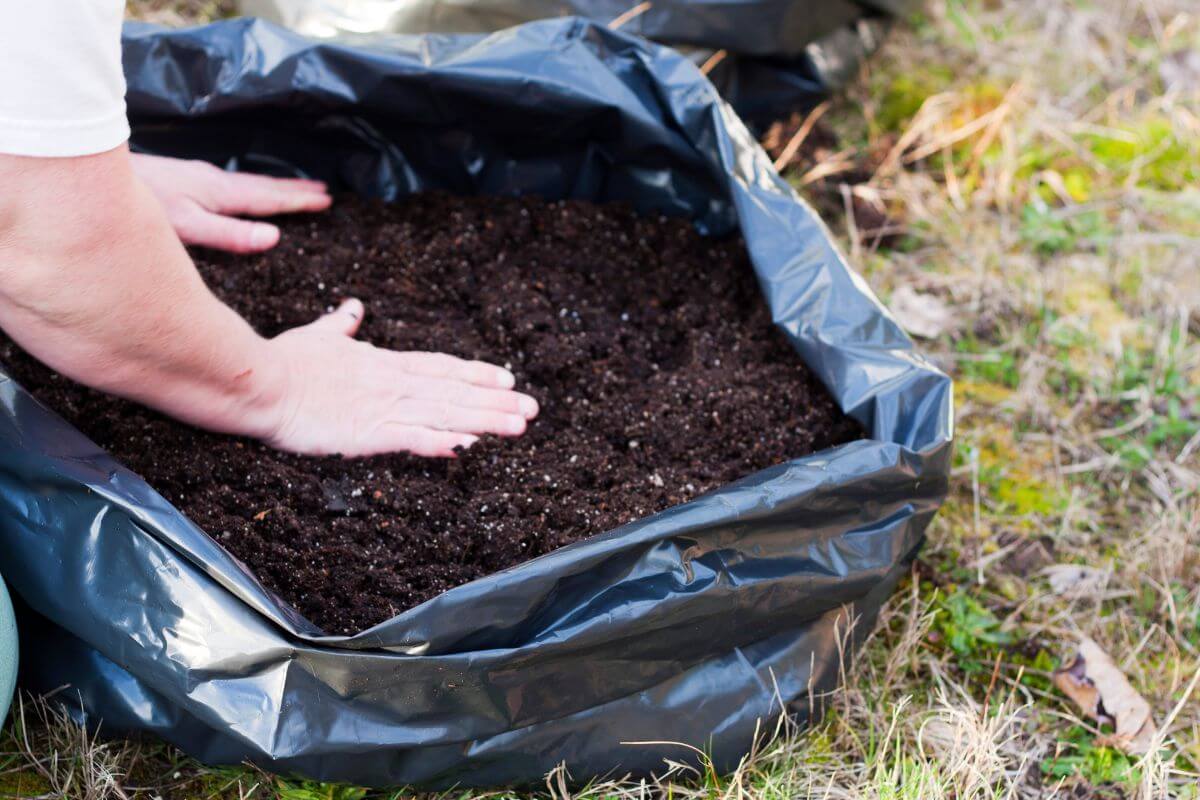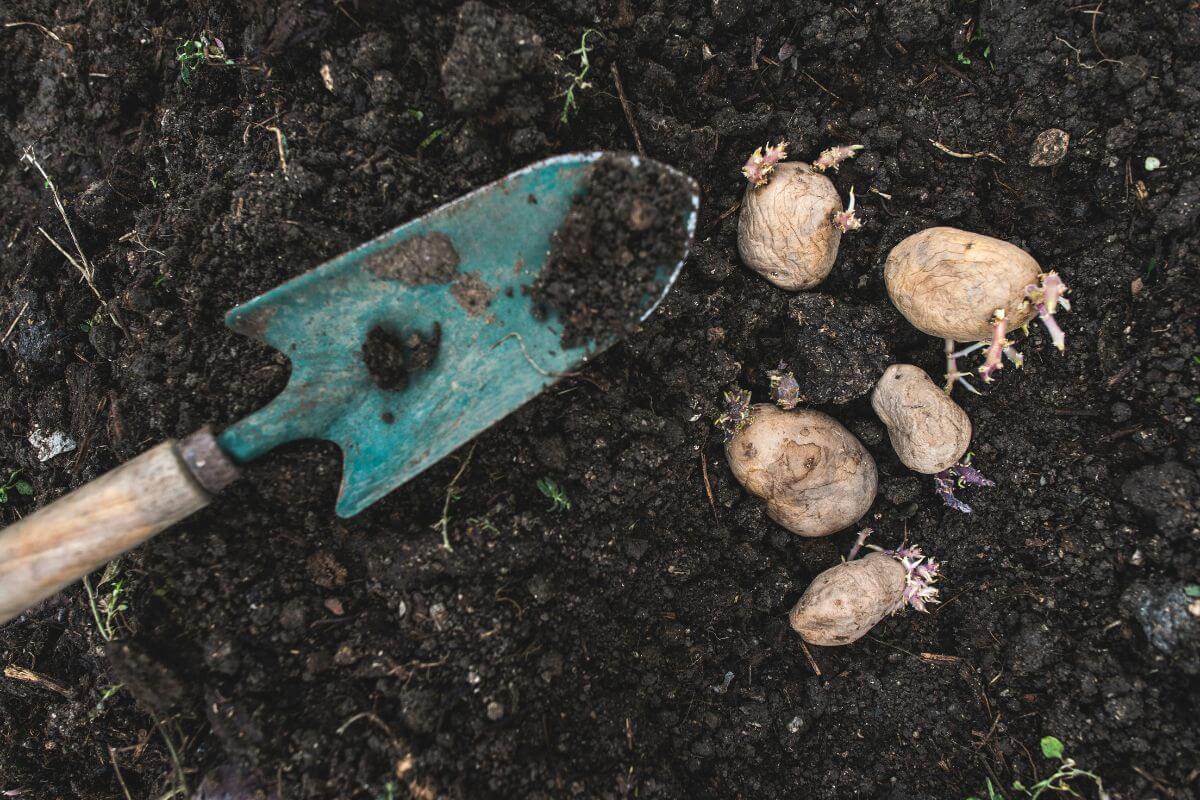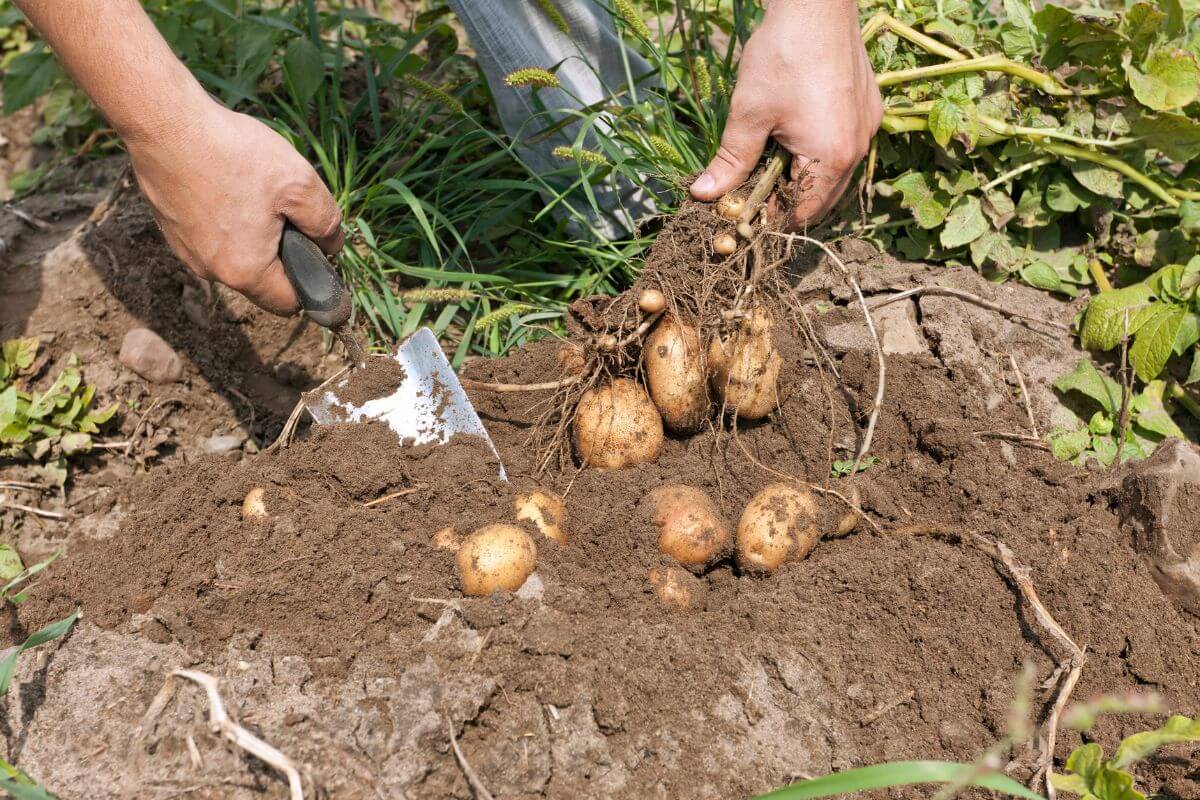The potato is the main source of carbohydrates for many people, because it’s a versatile crop and can be paired with many meals. That’s why growing organic potatoes is so common.
Potatoes contain loads with many nutritious vitamins, minerals and antioxidants. They have been linked to health benefits, including blood sugar control, higher immunity and reduced risk of heart disease.
Potatoes are highly adaptable and will grow in a variety of climates. That’s helped it become one of the most popular crops to grow in your organic vegetable garden around the world.
Here is a complete guide on how to grow organic potatoes.
- Related Article: How to Start an Organic Garden
Potato Varieties

There are many varieties of potato on the market. As they have been grown by home gardeners for such a long time, there is also an abundance of heritage potatoes out there.
When choosing which potatoes to grow, you have to understand the three main categories of potato. They’re categorized by their maturity length.
- First Early – These are the earliest to crop, and will be ready in just 10-12 weeks. Also called ‘new’ potatoes, you will be able to enjoy these by June and July. Plant them in March, but protect them from frost with fleece or straw.
- Second Early – Plant these at the same time as your first earlies, but they take slightly longer to mature. Ready in 14-16 weeks, you will be able to harvest them from July to August.
- Maincrop – These take 16-22 weeks to mature. Plant from mid to late April for harvest in August and September.
It is a good idea to plant varieties from all three categories in order to have fresh potatoes for at least half of the year.
If you have a frost-free greenhouse, you can even plant seed potatoes in pots during August for a fresh crop at Christmas!
Site and Organic Soil Preparation

Potatoes are very easy to grow. They do well in all sorts of soil and an open sunny spot is best.
They like moisture-retentive, fertile crumbly soil. Ideally, you should dig in well rotted compost into your potato patch in autumn in preparation for planting in spring.
Potatoes can be grown in large pots or bags, as well as directly in the soil. For best results, use organic soil in your garden.
A large container pot could be great, as you can dump out soil in the container to harvest the potatoes. There’s no risk cutting into them with a spade shovel when digging them up.
Planting the Potatoes

Potatoes do produce seeds and therefore it is technically possible to grow from seed. However, the more common (and easier) way of growing potatoes is to use a ‘seed potato.’ Simply put, this is a tuber that has been saved and stored for replanting.
Seed potatoes are widely available, and can even be brought online. One seed potato will produce many potatoes for you to harvest.
First you will have to ‘chit’ your seed potato. This means allowing your potato to sprout and grow shoots – a common sight if you’ve ever left a bag of potatoes in your cupboard too long!
Put your potatoes in a tray, I find egg cartons work really well as they keep the potato in place.
Identify the ‘eyes’ – these are the little dints in the potato from which the shoots will sprout. Put the side with the most eyes facing up and leave them in a sunny spot for up to six weeks, until the shoots are around 3/4 inch long (2 cm).
Plant them in rows about 5-7 inches deep (12-17 cm) deep with the shoots facing up. Leave 12-15 inches apart (30-38 cm) between potato plants and 30 in. (75 cm) between rows.
Growing the Potatoes
Potatoes need regular watering, especially during dry spells.
As the plants grow, add compost to cover the shoots. This is called ‘earthing up’ and keeps the newly forming tubers covered. That helps save them from turning green and inedible.
Pests and Diseases
Slugs can be a problem, especially if you’re growing in bags or containers. Check for slugs underneath the containers. You can wait until dark and go out with a torch to catch them in the act!
Potato blight is a common issue, which is a fungal infection that turns the leaves yellow with dark patches. If this happens, cut off and destroy the leaves as soon as possible.
Depending on how early you catch it, you should still be able to harvest the potatoes as the fungus reaches the tubers last.
Colorado potato beetle, potato leafhoppers, and wire worms can also cause significant damage to crops. Most of these can be handled by crop rotation, a popular method of organic pest control.
You should never plant potatoes in the same soil two years in a row. This is because most pest and diseases will build up in the soil, and planting something different will control most issues.
Follow potatoes by planting legumes or root vegetables, like onions and carrots, in the crop rotation.
Harvest and Store

Both first and second earlies are best eaten fresh and don’t store well. Maincrop potatoes are usually slightly bigger and can be stored for a few months.
First and second earlies are harvested when the plants are still flowering and the potatoes are about the size of an egg.
They do not store well, so dig them up when you want to use them. Cut the potato plants down, then gently dig out the tubers from the ground with a fork.
Maincrop potatoes are harvested after the plants have flowered and the leaves turn yellow. Choose a dry day to harvest, so they store better. Leave them in the sun for a few hours to dry off.
If you grew the potatoes in a container pot, simply empty out everything, and pick out the potatoes.
Store maincrop potatoes in a dry, dark place. They need to be kept in a well-ventilated area to avoid rotting, so a net bag or wicker basket is idea.
Do not store raw potatoes in the fridge or freezer. Cooked potatoes can be canned or frozen.
If you’re saving tubers for seed potatoes, keep them cool. Most importantly, keep them in the dark. Any hint of light will cause them to sprout. A cardboard box in the shed is best to store them in the winter, make sure they are not touching, and they don’t get damp or hot.
Growing Organic Potatoes Final Thoughts
Potatoes are easy to grow, versatile to cook, and can be stored raw or cooked.
They are a great addition to your garden and I’m certain that you will be able to grow them with great success.
For more organic growing guides, see our other articles:
Growing Organic Potatoes FAQs
Can you plant organic potatoes from the grocery store?
Yes, you can absolutely plant organic potatoes from the grocery store! As long as the potatoes sprout, you can plant them. You can find them at Whole Foods or any other healthy food place.
How long does it take for organic potatoes to sprout?
Potatoes take about two weeks from the time it’s planted to start showing signs of sprouting. They all need water and light in order to survive, so it’s just a matter of finding a warm place and giving them what they need. The easiest way is to cut the potatoes into halves or quarters and then wait until you see something coming out. In general though, organic potatoes will take about a week from cutting before you’ll see any progress with sprouting;
What’s the difference between seed potatoes and regular potatoes?
Seed potatoes were bred specifically to be a better replant option in gardens and farms than regular potatoes. Regular spuds are the ones that you commonly find and buy at grocery stores. Seed potatoes are usually found at garden centers and even online.
The best part is that even if you can’t find a garden center nearby that sells seed potatoes; they’re easy enough find online!
Can I grow potatoes in a bucket?
Yes, you can grow potatoes in a bucket. The size of the bucket determines how many potatoes you should plant. The general rule of thumb is 2 seed potatoes in a 5-gallon bucket, 3 potatoes in a 7-gallon bucket, and 5 potatoes in a 10-gallon bucket. Depending on the size of your family and how much you love potatoes, you may want to get larger containers and buckets. A 10-gallon bucket will yield about 4 pounds of potatoes, while a 5-gallon will yield 2 pounds.
What are organic potatoes?
Organic potatoes are potatoes which have not been exposed to synthetic chemicals in the agriculture process. Organic potatoes must be grown without utilizing any pesticides or chemical fertilizers. This is because chemical residues on those types of organic potatoes can be found long after they’re harvested and processed. That makes them less than ideal for consumers who want to avoid exposure to such substances.
Organic farming methods might lead to a higher overall nutritional value when compared against conventional farming methods. Organic farmers attend to nutrient deficiency problems by restoring depleted soils with compost and green manure crops, and rotating crops to provide for nutritional diversity. Maintaining soil quality through crop rotation and healthy planting density helps reduce the need for artificial fertilizers and pesticides.


